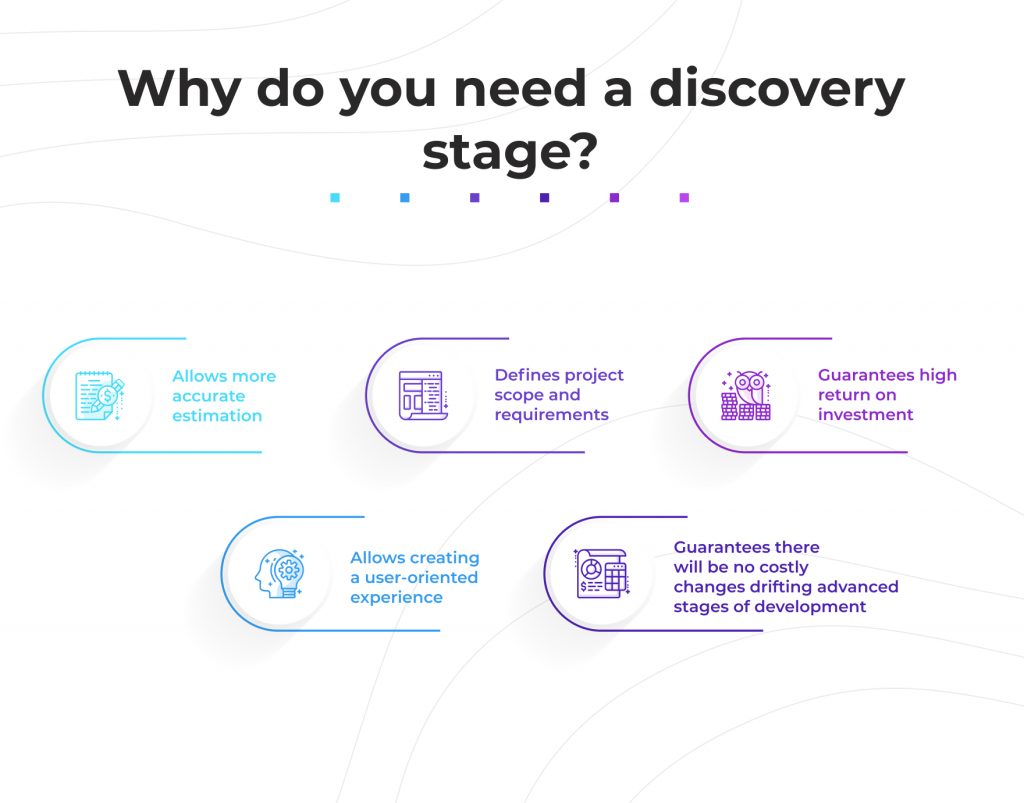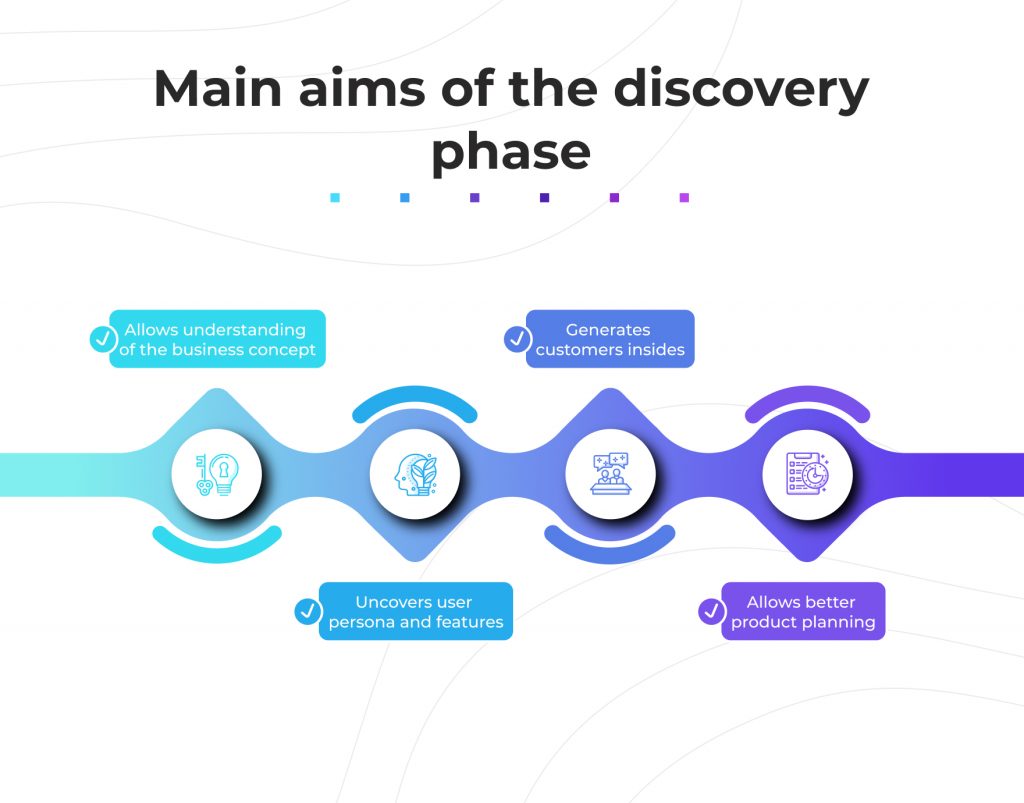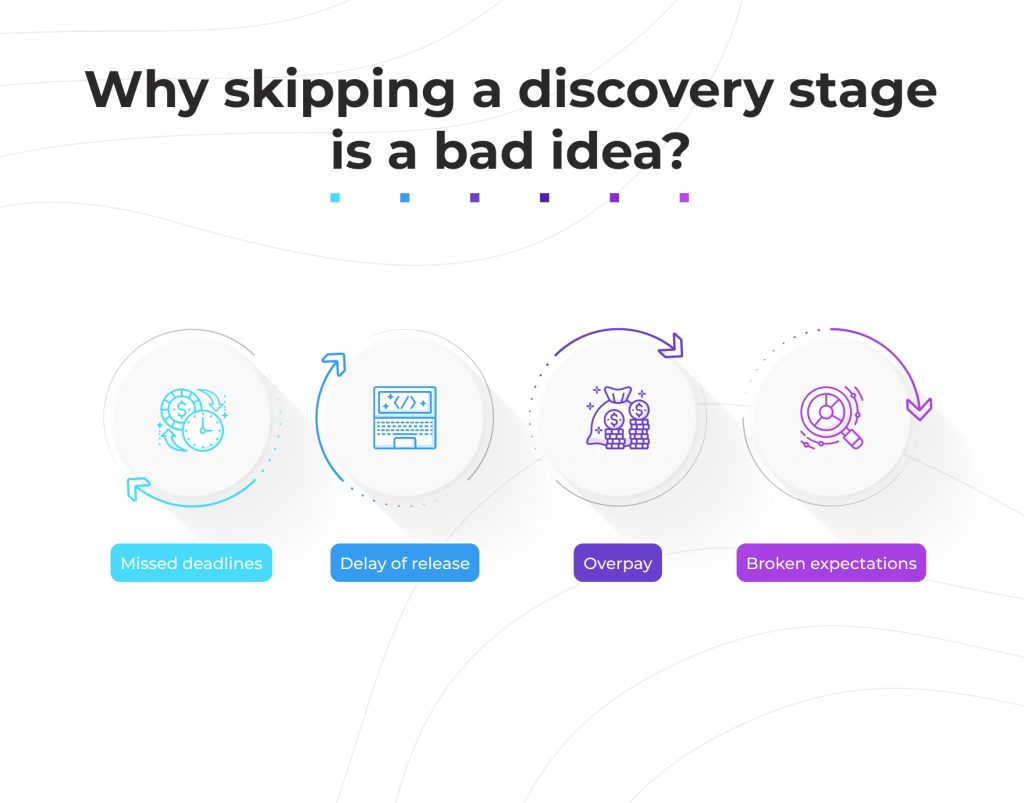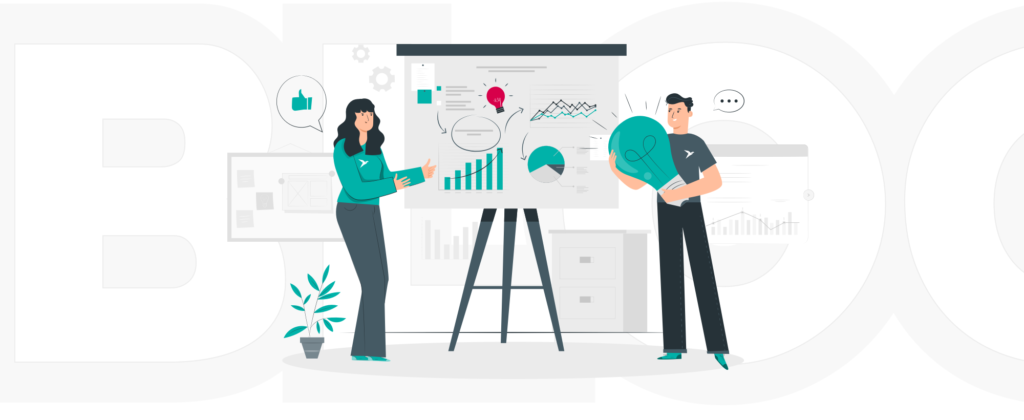Table of Contents
When you are a startup, at the early stages there are more questions than answers when it comes to development and software design. The strategy you will choose at the very beginning and the way you start building your product will help to formulate the best possible value proposition and define the success of your startup in the future.
According to the statistics, 42% of startups fail because they don’t have the market need, and 29% of startups fail as they ran out of money In the current fast-paced business environment, nobody wants to spend time planning and waste valuable time and resources, risking starting to build the product without validating available assumptions and relying fully on agile product planning. However, those who conduct the product discovery phase before launching the MVP building stage for sure will win and in this article, you will get the answer why. If you are an aspiring startup and have an impressive idea and no strategy for what to do next – this article is for you.Discover MVP concept as a part of lean startup methodology
MVP (Minimum Viable Product) is a core component of the Lean Startup methodology, tech information you as a startup owner on how to put your idea into a reality, preserve and grow your young business with maximum efficiency and acceleration.
The genuine MVP is a product that solves at least one of your target user’s problems and covers only the functionality that demonstrates your product correctly.
It provides the direction for future product development guiding you where to move and what to improve. The property-built MVP allows to startup owner to get all the necessary insights about the way users interact with the product.
Why building minimum viable product (MVP) is important
MVP is an efficient instrument for a young business since it allows you to launch the basic version of your product with minimal investments, test it and prove it is suitable for a target user and solves his main problems.
Unfortunately, many business owners neglect the importance of MVP, as a result of having perfect fully featured products that for some reason fail. Here are some actual statements proving the importance of starting your project with the MVP:
- Ability to realize the product quickly and get the support and acknowledgment of real customers, or find ambassadors of your brand.
- Wise budget distribution, since MVP allows you to test your idea on the market without investing huge sums of money.
- A better understanding of customer preference is another reason why you need to start with MVP.
- It allows you to discover market trends and choose the best direction for the full version product development.
- It is the best way to attract investors and demonstrate how your idea will work in the market.
The importance of the Discovery phase of a software project
The methodology allows companies considerable freedom in the choice of development practices. However, all of them have a common aim – to launch a successful MVP.
The aim of the product discovery phase is usually conducted to validate the vision of the product and follow a more systematic approach to product design and building.
It allows you to identify what is important for future MVP and what your success criteria will be. The product discovery phase allows to organize of the workflow efficiently, involving research, communication with customers, and gathering of valuable insights for future strategic planning.
It usually starts with the design of the pre-MVP concept when the team of experts explores the market environment and gathers user insights. It creates a solid basis for an efficient project plan.

Main aims of the Discovery phase
Understanding business concept
Business competitive analysis, the continuous discovery of target user motivations, and understanding of the general picture are the main aims of the product discovery phase. It allows the idea owner and tech partner to establish a solid common ground for future productive cooperation.
Uncover user persona and features
It allows identifying your target user, defining the feature map and user flow, and making the future app usable, impressive and accessible. Wireframes are also documented as a graphical capturing of the current stage.
Generate customer insights
Getting to know the customers is a must do activity. The data you gather will help to better understand customers’problems and provide opportunities to assist them in the future. In a typical analysis of the customer’s behavior, everybody starts with the same assumption.
Product planning
Still, your product is comprehensive and the planning is too rough. Thus, a discovery stage allows us to prioritize the features and functionalities of various abstract product ideas. To bring your product idea into reality and launch your product, you create the list of deliverables, product roadmap, architecture, and budgeting and describe technical needs and needed specialists.

The discovery process is a crucial step since it allows us to understand what problems does project addresses. Moreover, it allows bridging the gap between the concept and MVP defining the project’s success.
How a Discovery phase can help your project sucess?
According to Mckinsey’s research on implementing development projects, an average large IT project overruns its budget by 45% while benefits shortfall is 56% less than expected. And those who survive the competition have conducted the discovery phase.
Thus the discovery stage is valuable, since:- Allows more accurate estimation;
- Defines project scope and requirements;
- Guarantees high return on investment;
- Allows creating a user-oriented experience;
- Guarantees there will be no costly changes drifting advanced stages of development;
Why skipping the Discovery phase is a bad idea?
Missed deadlines
When you have no clear process understanding and exact project planning, the project has no proper boundaries. It means missed deadlines and constant postponing.
Delay of the release
If you do not have measurable expected results creates the constant need for increasing the project timeframes and changing the scope of work, as a result – delays with the releases.
Overpay
Since you do not have the exact requirements and formulated project goals, it will result in climbing costs.
Broken expectations
If you do not have a clear picture, misunderstandings may arise. Moreover, create unexpected expenses.

Duration and price of the Discovery phase
The discovery phase is the crucial software development process part. It is the core element of project initiation and is usually placed in the first sprint. It is very important since allows us to discuss every crucial moment and to confirm whether the client and a tech team are on the same side.
The duration of the discovery phase depends on the complexity of the project and may vary from two to ten weeks.
As a rule discovery base is associated with time and material or fixed priced model. And payment also depends on hourly rates and amount of experts taking part in a discovery phase.
Tech Side of the Question
During the discovery phase, you directly cooperate with the discovery team – CTO, business analytics, product manager, designers, and solution architects.
Through the discovery phase, the team works on user stories, solution architecture, design mock-ups, wireframes, project roadmap, etc.
Only after that, your project moves to the prototyping stage, where the team can validate the deliverables from the discovery phase. This phase lasts for about four-five weeks and allows getting feedback from a focus group, who will be responsible for the usability and improvement of your future product.
After you have the project feedback, the next stage is MVP implementation. It may take up to twelve weeks. It already has a hosted staging environment ready for testing the user acceptance.
Then follows the release of the product and a post-realize maintenance stage, when the team tests user acceptance, rolls out the product to the production environment and starts adding new features oriented on customer feedback.
The average duration of the MVP building process lasts from four to six months, depending on the budgeting and the complexity of the project.
Why isn’t the Discovery stage practiced by every software development company?
Despite the importance and relevance of the discovery stage it is still often neglected both by software development company and its clients. Here are some common reasons why the discovery phase is often ignored:
- It takes too much time and resources. In this stage, the discovery phase takes up to 4 weeks and the MVP stage may take up to 12 weeks. Bushes owners tend to neglect the discovery phase as a way to save 4 weeks in project development.
- Fear of failure. Actually, the discovery stage allows you to validate the product idea and test your assumptions. Being enthusiastic about their ideas, business owners are not ready to hear something can be wrong and may need change or improvement. However, building the product solely on your assumptions and perception of things may play a bad trick on you.
- Many IT suppliers lower the price for product development lifecycle by neglecting the discovery phase. Such partnerships usually are not productive and will not last long. Miser pays twice. Thus, make choose to choose service provider that offers a continuous discovery stage, since there is only a small amount of such vendors.
To sum up
As in each process, you cannot start something from the middle, or from the end. To achieve maximum efficiency and make your project successful you need to go through all development stages and make sure to conduct continous discovery.
As startups often have limited budgeting, they are looking for ways to plan the budget wisely. However, the real thing to consider is discovering where exactly are you as a business on your progress map. It will allow you to discover, what you need to do now.
The continous discovery phase is one of the most important stages of software development by the process. It serves as a basis for your future product and in many ways may define its success.
Planning is another cornerstone of your success. Thus you need to design a detailed roadmap for extracting maximum value at each stage of your development process
Do -learn -adjust and repeat – main of the Agile principles you are to follow. Discovery, Testing, orientation on the end user feedback, constant exploration, and accurate planning are your main companions on the road to a successful project.



